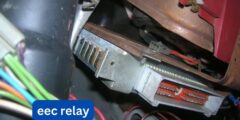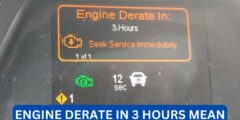When driving a Jeep, encountering an error message or warning light can be frustrating and confusing. One common issue that Jeep owners may come across is the “No Bus” message displayed on the instrument cluster. This article aims to provide a comprehensive understanding of what the “No Bus” message means, its potential causes, and possible solutions.
Contents
Understanding the “No Bus” Message
The “No Bus” message on a Jeep refers to a communication error between the various electronic control modules (ECMs) in the vehicle. ECMs are responsible for controlling and monitoring different systems, such as the engine, transmission, ABS, airbags, and more. When the communication between these modules is disrupted, the “No Bus” message is displayed.
This error message typically appears on the instrument cluster, which is the panel that displays important information to the driver, such as speed, fuel level, and warning lights. The “No Bus” message may be accompanied by other symptoms, including loss of power, non-functioning gauges, and intermittent starting issues.
Potential Causes of the “No Bus” Message
Several factors can contribute to the “No Bus” message on a Jeep. It is essential to identify the root cause to effectively resolve the issue. Here are some common causes:
Read:What does 245/35r18 mean?- Faulty ECM: A malfunctioning ECM can disrupt communication between modules and trigger the “No Bus” message. This can occur due to internal component failure or damage.
- Wiring Issues: Damaged or corroded wiring harnesses can interfere with the communication between modules. Over time, exposure to moisture, heat, and vibrations can cause wires to deteriorate.
- Loose Connections: Loose or poorly connected wiring harnesses and connectors can disrupt the communication network, leading to the “No Bus” message.
- Short Circuits: Electrical shorts caused by damaged wires or faulty components can interrupt the communication between modules.
- Aftermarket Accessories: Improperly installed or incompatible aftermarket accessories, such as radios or alarm systems, can interfere with the vehicle’s communication network.
Diagnosing and Resolving the “No Bus” Issue
Resolving the “No Bus” issue requires a systematic approach to diagnose and address the underlying problem. Here are some steps to follow:
Step 1: Check for Loose Connections
Start by inspecting the wiring harnesses and connectors for any signs of looseness or damage. Ensure that all connections are secure and properly seated. If any issues are found, reconnect or repair the affected components.
Read:What does it mean when a car is state reffed?Step 2: Inspect the Wiring Harnesses
Thoroughly examine the wiring harnesses for any visible damage, such as frayed wires, corrosion, or melted insulation. Repair or replace any damaged sections to restore proper communication between modules.
Step 3: Test the ECM
If the wiring appears to be in good condition, the next step is to test the ECM. This requires specialized diagnostic equipment that can communicate with the ECM and retrieve error codes. These codes can provide valuable insights into the specific issue affecting the communication network.
Step 4: Address Aftermarket Accessories
If aftermarket accessories have been installed, disconnect them temporarily to determine if they are causing the “No Bus” issue. If the problem resolves after removing the accessories, consult a professional to ensure proper installation or consider using compatible alternatives.
Step 5: Seek Professional Assistance
If the above steps do not resolve the “No Bus” issue, it is recommended to seek assistance from a qualified mechanic or dealership. They have the expertise and specialized tools to diagnose and repair complex electrical problems.
Preventing the “No Bus” Issue
While some causes of the “No Bus” issue may be unavoidable, there are steps Jeep owners can take to minimize the risk. Here are some preventive measures:
Read:What Does Parked Regen Inhibited Mean?- Regular Maintenance: Follow the manufacturer’s recommended maintenance schedule to ensure all systems are in good working condition.
- Protect Wiring Harnesses: Routinely inspect and protect wiring harnesses from exposure to moisture, heat, and physical damage. Consider using wire loom or conduit to shield the wires.
- Proper Installation of Accessories: If installing aftermarket accessories, ensure they are compatible with the vehicle’s electrical system and follow the manufacturer’s instructions for proper installation.
Summary
The “No Bus” message on a Jeep indicates a communication error between the electronic control modules (ECMs) in the vehicle. This issue can be caused by a faulty ECM, wiring issues, loose connections, short circuits, or incompatible aftermarket accessories. To resolve the problem, it is important to check for loose connections, inspect wiring harnesses, test the ECM, address aftermarket accessories, and seek professional assistance if needed. Taking preventive measures, such as regular maintenance and protecting wiring harnesses, can help minimize the risk of encountering the “No Bus” issue. By understanding the causes and following the appropriate steps, Jeep owners can effectively diagnose and resolve this frustrating problem, ensuring their vehicle operates smoothly and safely.








